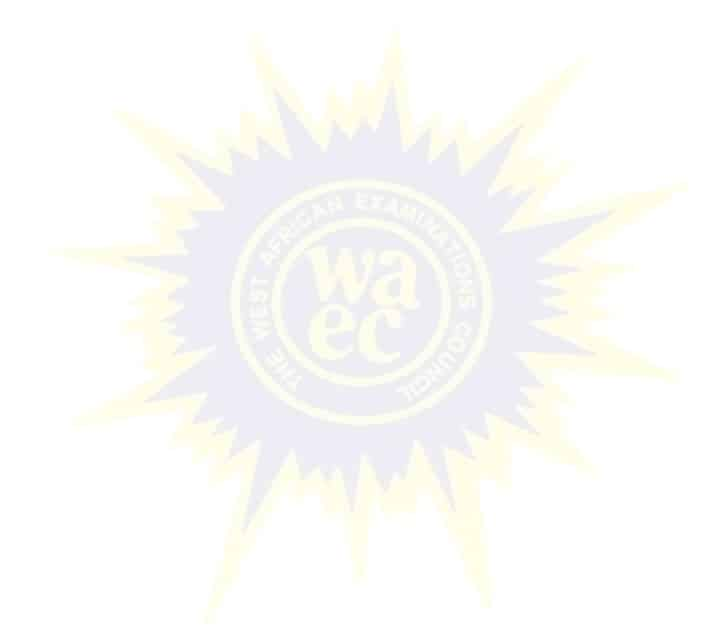
Biology
Paper 1 | Objectives | 58 Questions
WASSCE/WAEC MAY/JUNE
Year: 1996
Level: SHS
Time:
Type: Question Paper
Answers provided
FREE
No description provided
Feedbacks
This paper is yet to be rated

Paper 1 | Objectives | 58 Questions
WASSCE/WAEC MAY/JUNE
Year: 1996
Level: SHS
Time:
Type: Question Paper
Answers provided
No description provided
This paper is yet to be rated
Scholarship in Norway universities are open for application in 2022 also for developing countries.
Effective ways of coping with exam stress and test anxiety which is supported by Science
These are the best study techniques and methods that get higher grades in any school tests or exams.
| # | Question | Ans |
|---|---|---|
| 1. |
Which of the following levels of organisation in living things is in the correct sequence, starting from the A. tissue → cell → organ → system B. System → organ → tissue → cell C. Cell → tissue → system → organ D. Cell → tissue → organ → system E. Organ → system → tissue → cell. |
B |
| 2. |
A few drops of fehling’s solution was added to juice extracted from fresh maize grain and boiled. A red A. alcohol B. protein C. non-reducing sugar D. starch E. Endoplasmic reticulum |
D |
| 3. |
Which of the following is not a cell organelle? A. Golgi body B. Nucleus C. Fat droplets D. Ribosome E. Endoplasmic reticulum |
C |
| 4. |
One of the differences between plants and animals is that A. growth is indefinite in animals but definite in plants B. nutrition is autotrophic in plants but holophytic in animals C. in plants there are excretory systems but in animals waste products are stored away D. plants react slowly to external stimuli while animals react more quickly E. respiration takes place in animals but does not take place in plants |
D |
| 5. |
Which of the following are the final products of aerobic respiration? A. Water, carbondioxide and energy B. Pyruvic acid, carbondioxide and water C. Glucose, energy and urea D. Energy and carbondioxide E. Lactic acid, water and carbondioxide |
A |
| 6. |
Movement of water across a semi-permeable membrane from a weaker solution to a stronger solution is A. transpiration B. diffusion C. active transport D. plasmolysis E. osmosis |
E |
| 7. |
Ln which of the following structures will cells undergoing meiosis be seen? A. At the apices of stem and root B. In the cortex of the stem C. In the pallisade mesophyll of the leaf D. ln the ovary of a flower E. ln the root of a seedling |
D |
| 8. |
Which of these instruments can be used to perform an experiment on geotropism? A. Potometer B. Cup anemometer C. Klinostat D. Kymograph E. Sphygmomanometer |
C |
| 9. |
The thoracic vertebra differs from all the other vertebrae by the possession of A. long neural spine B. odontoid process C. vertebraterial canal D. Large centrum E. transverse processes |
A |
|
Study the list. |
||
| 10. |
Which of the following are found immediately next to the skull? A. I B. II C. III D. IV E. V |
D |
| 11. |
Which of the following articulates with the ribs? A. I B. II C. III D. IV E. V |
B |
| 12. |
Which of the following articulates with the pelvic girdle? A. V B. IV C. III D. II E. I |
A |
Preview displays only 12 out of the 58 Questions